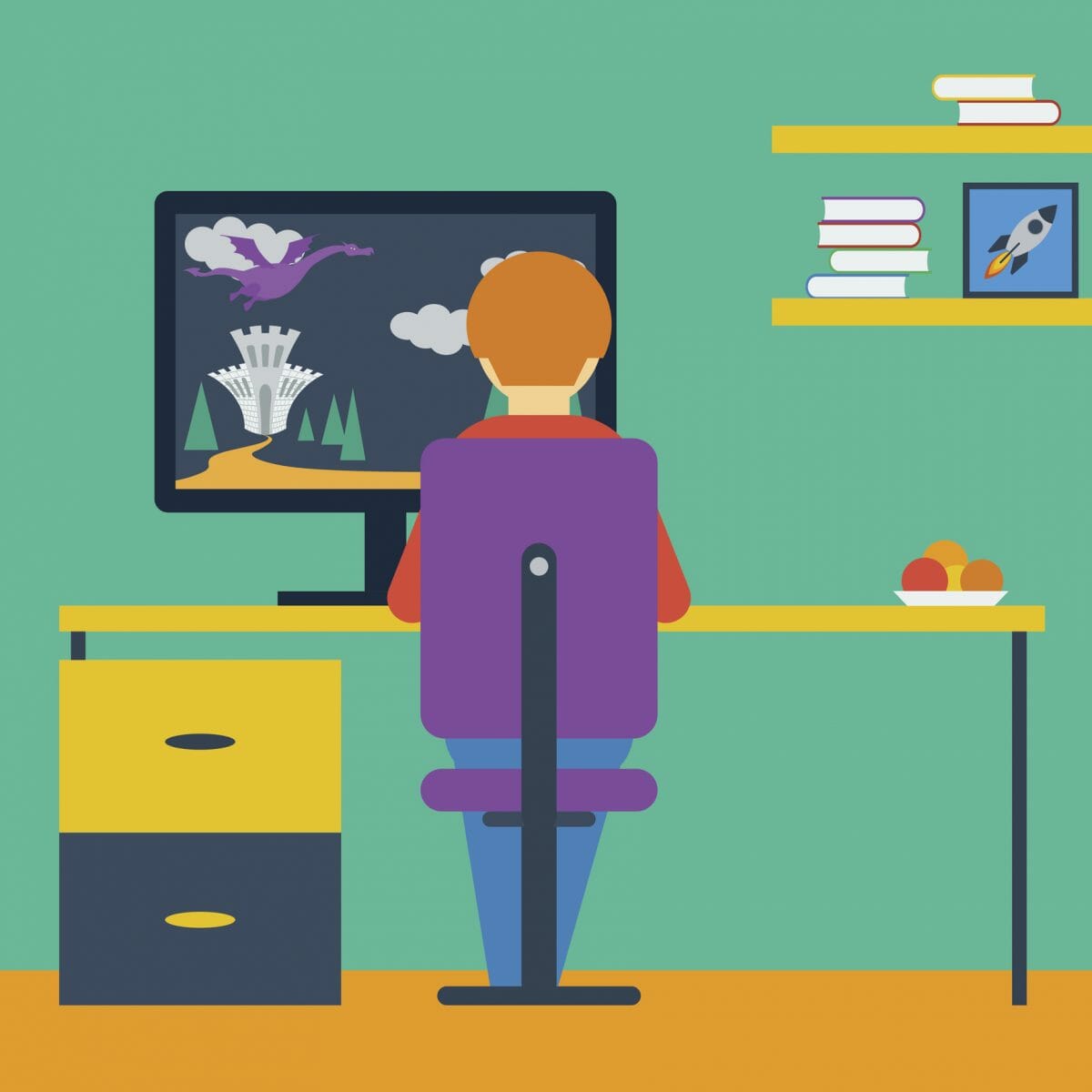
Articles
Editor’s Picks
Screen Time Should Be About Quality, Not Quantity
By Henry Kronk
March 06, 2018
Many parents and educators have begun to obsess over the screen time their children/students receive. A screen could be a television, a computer, a tablet, or a mobile phone. What users can do with that screen varies infinitely more. The term ‘screen time’ is as broad as ‘recreation’ or ‘learning,’ yet most people involved in the discussion characteristically treat this all-encompassing term with a singular attitude: it’s bad.
Screen Time at Home
Last week, ABC News published an unscientific experiment about the amount of screen time children are allowed. Reporter Becky Worley followed a family of six as parents Angie and Chad Harding lifted their usual (and somewhat Draconian) restriction of “a few” hours of screen time per weekend for their four kids aged 6 to 11.
From 4 pm Friday to 4 pm Sunday, the kids were allowed unrestricted access to their tablets and video games. As almost any member of the 21st century might guess, they logged a shocking amount of screen time, ranging from 16 hours to 46 hours per child. (Yes, one kid spent only two hours out of 48 not looking at a screen.)
Screen Time in the Class Room
This highly clickable article stands in stark contrast to an Alaska elementary school which is currently undergoing their own experiment: no screens in class for one week. The students at Nikiski North Star Elementary School have never known a classroom without a screen. The have access to computers throughout the school, tablets with which they complete learning modules in many subjects, TVs, and smartboards.
 This week, they’ve done away with them completely, and, according to the Peninsula Clarion, the pinch is felt most acutely in the lack of music.
This week, they’ve done away with them completely, and, according to the Peninsula Clarion, the pinch is felt most acutely in the lack of music.
“It’s not that we’re saying technology is bad,” said Principal Margaret Gilman according to the Clarion. “We just want the students to have an opportunity to look at it both ways.” Many students told reporter Kat Sorensen that they enjoyed their week, the days passed quicker, they remembered more of what they learned, and that they had more opportunities to interact with their peers and make friends.
Screen Time in Society
As a third example of screen time coverage, the New York Times published an article titled “America’s Real Digital Divide” in February. The story addresses and seeks to debunk the idea that providing devices to learners will improve their education. It describes how screen time varies widely based on socioeconomic factors and presents various research.
“According to a 2011 study by researchers at Northwestern University,” writes author Naomi Schaefer Riley,” minority children watch 50 percent more TV than their white peers, and they use computers for up to one and a half hours longer each day. White children spend eight hours and 36 minutes looking at a screen every day, according to a survey by the Kaiser Family Foundation, while black and Hispanic children spend 13 hours.”
Schaeffer concludes by writing, “The real digital divide in this country is not between children who have access to the internet and those who don’t. It’s between children whose parents know that they have to restrict screen time and those whose parents have been sold a bill of goods by schools and politicians that more screens are a key to success.”
There is next to zero rhyme or reason in how we discuss screen time.
It’s nothing short of an intricate, nuanced topic that’s painted almost exclusively with broad strokes. Below are a few takeaways to remember next time you’re confronted with the topic:
-It’s not what you have but how you use it. One can use a screen to play Minecraft on your own, or play someone from across the world in chess. Screens can deliver information, test your problem solving abilities, connect you with friends, and any number of other things. Despite what the New York Times and ABC reports, screen time is neither all good or all bad.
-Equating television-watching with internet activity is ludicrous.
-Setting matters. The screen time limitation in Nikiska North Star Elementary is turning out to be a paradigm shift; the lifting of limitations in the Harding family was a good old fashion screen time 0orgy. Our use of screens depends upon the environment in which we use them as well as our purpose.
-Screen time can deliver a beneficial, productive moment of education and growth.
-Screen time can be equally detrimental.
-Many (often members of older generations) continue to approach new technology with an undiscerning eye. The wide-ranging and non-specific discussion of screen time boils down to one cardinal sin: ignorance. If parents want to truly curate their kid’s educational experience in a meaningful way, they’d learn a little more about how kids actually use their screens.









No Comments